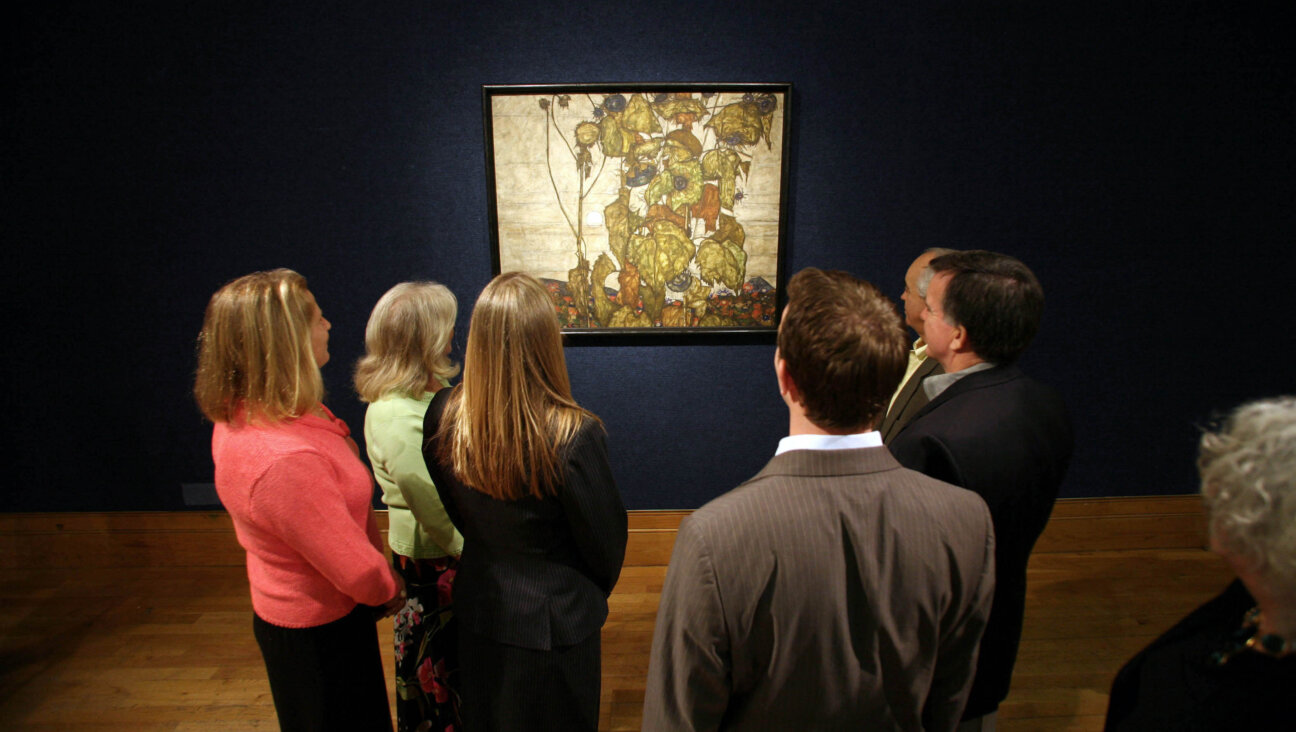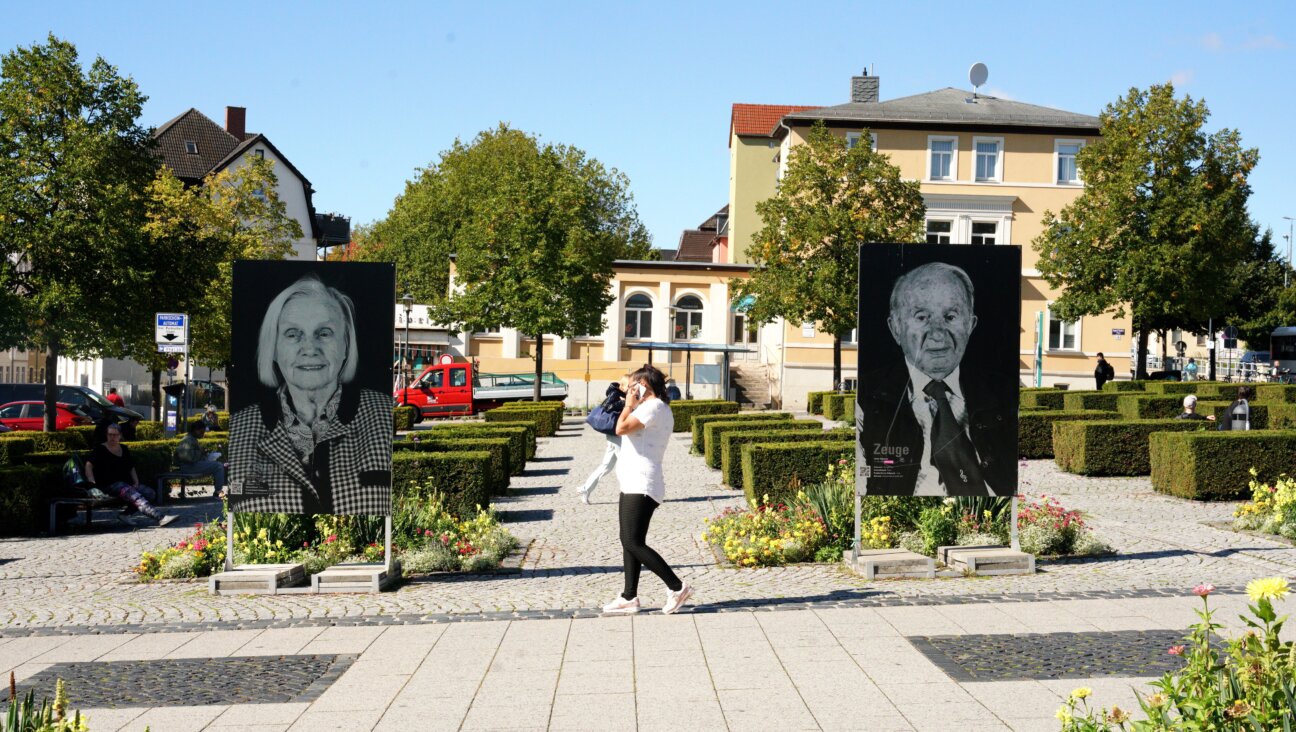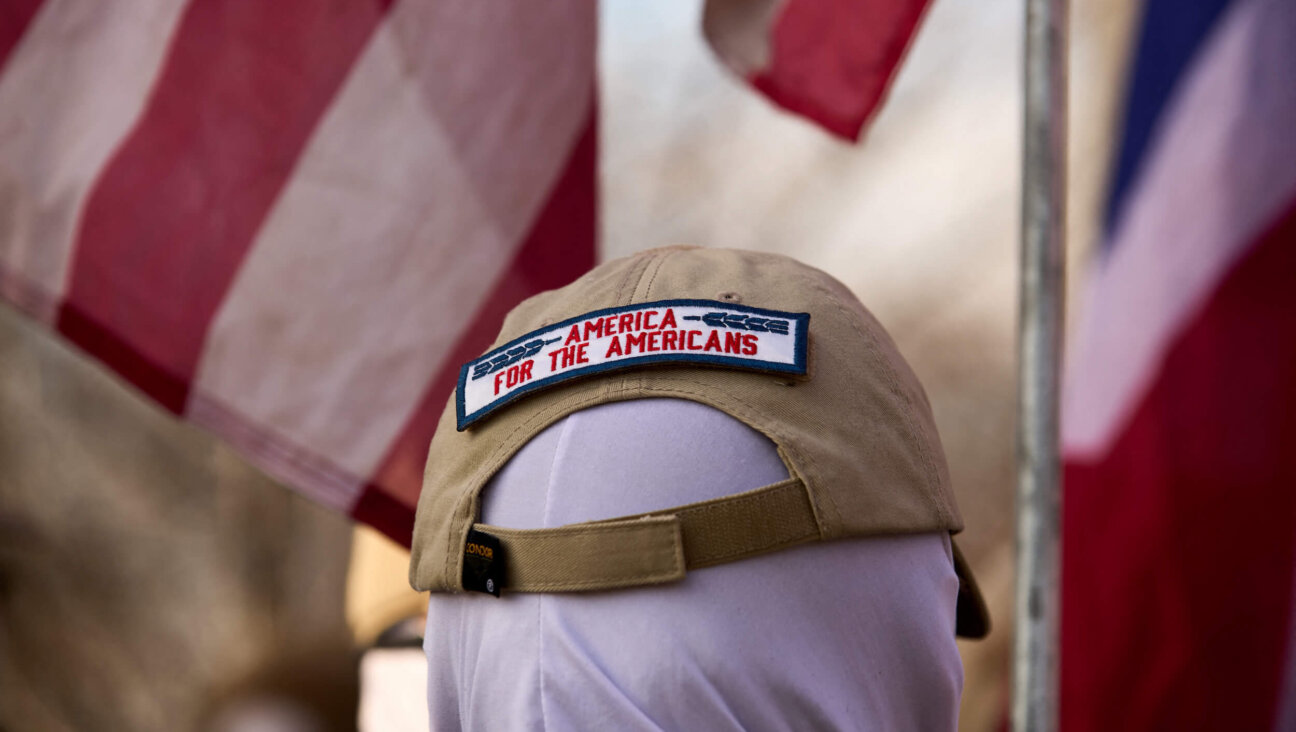‘The Boarding House’
Originally published in Poland by Nisza Publishing House in 2009. Translated especially for the Forward by Tusia Dabrowska
Prologue
In the beginning, there were train tracks. In the greenery, between heaven and earth. With stations, like beads on a string, placed tightly so that even before the train managed to accelerate, it had to slow down before the following stop. Platforms made of concrete, narrow and shaky, equipped with ladders and steep steps, grew straight out of sand, as though built on dunes. The stations’ pavilions bore resemblance to old-fashioned kiosks: elongated, bent awnings, azure letters on both ends, which appeared to float on air.I’ve always enjoyed peering at them, beginning with the first station outside the strict limits of the city, when the closely knit urban architecture quickly disperses and the world expands to an uncanny size.
Luckily, the tracks remained as I had left them. They run straight ahead, in a decisive gesture to melt with the horizon, from here barely visible, hidden behind the nature, or to the contrary: to disappear in a hidden tunnel hollowed in the sky and then run on the other side, in a completely different and unknown world.
Along the tracks, a road wound. It was sandy, meandering between shrubbery of heathers, then became average, rural. Behind the window shimmers a land of car fixing shops, take-out bars, and motley signs sprayed on brass snippets. Poorly plastered, the cube-shape houses made of airbricks and roadside fortresses triumphed over the wood architecture. They sat down, spreading comfortably and widely, convinced of their own success. A few hovels remained here. Perched above the tracks, apologizing for their existence, they held tightly to the grass; however, the grass could not prevent their inevitable decline. Here and there, a lonely pigeon coop stuck out. Large gray birds crowded on the steep awnings, tightly next to each other, their wings touched and jostled, even though there was plenty of space (equally apt space) to dot with droppings. Flushed by the roar of train cars, they rose to flight, only to return to their old tasks after some nervous rounds above the maze of traction current lines.
The train was slowing down in the wilderness of cross tracks; it passed the loading ramp covered in shrubs and, with solemnity, rolled into the final station. It must have been around noon, maybe a little later, nothing else could be gathered from the train schedule. The hands of the station’s clock failed to move, and I was not about to wait until they begin to rotate, catching up on the lost moments. The crowd flew in a hurry, dragging heavy luggage, trying not to bother with its presence. From then on, I have to walk by foot. It‘s close by, I should have no problem finding my way. In this area, the loss of matter was less prevalent. It seemed that the process of disintegration slowed its tempo, showing mercy to its subjects. In fact, everything has remained the same here, against the rule, rhyme or reason. The sun was still high up, above single wooly clouds. The web of fall tones loomed over the contours of houses, changing the solid shapes into artistic visions hung in the air, vibrating with light.
There was only one train track because the other one was taken apart, something like a hundred years ago. Vistula River train line. That’s what we called it at home.
Not the Otwock line but Vistula River train line. Or, simply, “the line.” I don’t know why. A name I’ve heard since ever. Like “Nalewki,” or “Plac Kraniskich,” “Gesia 18,” and “Swietojerska 13,” where on the corner with Nowiniarska our home stood. That is our home from before the war; however, Swietojerska was spoken about in present tense, as if it had not ceased to exist. And our summer boarding house. The buildings here were erected quickly: beams, wood boards and some pine needle thatch inside to keep in the warm air. They still prove to be vital, more than half a century older than their oldest dwellers. They pretend they had not been orphaned. They have always kept their style. Tradition and modernity in its eclectic form. Sculpted patios hidden in jasmine shrubs and window shutters with folk-style peeping holes cut out, adorned with wild vine shrubs pruned to allow the light in. Small, ladder-shaped galleries, towers, spiky spires on a scaled roof, with or without weather cock. And if not with weather cock, then with a flag. And glassed verandas, deck chairs to take air rest, the height of then fashion. Tall, dry rooms with large windows soaking in sun for the Catholics and Israelites with chronic chest problems. Winter and summer spaces, on the ground floor, or above, accessible prices. The rooms on the first floor are cheaper because they require a hike up to the first floor, but they are cozier. Everything according to the whims of visitors in need of treatment and summer guests, all conveniences included tubs, showers, hot and cold water. A continuous care of doctors, before each renting the place is thoroughly disinfected. And two acres of forest. Fancy-shmancy, possibly not Karlsbad but better than Ciechocinek. Block-paved streets, palm trees in wood planters, the right atmosphere and elegance. And the streets bursting with pastry shops and ice-cream vendors, buffets (organized groups receive a discount), shops with colonial foods (tea, coffee, cocoa from different companies, tobacco products), reading rooms and salons for card playing, concert halls and prayer houses, kiosks with daily newspapers and periodicals (the papers arrive with the earliest trains and are sent to subscribers twice a day), but also selling stamps and postcards with landscape, doctor’s scales, billiards, and radio!
On summer evenings, crowds of pedestrians swarmed on the resort path, Warsaw gentry ambled up and down, the lampoons flickered. Couples swirled on dance floor until everyone felt dizzy, the orchestra inviting to dance the tango every night: “Take everything…or nothing…” Jauntily, as if the world were not marching toward the catastrophe. There were new romances and children were born. The owners of boarding house counted their earnings, and the guests booked rooms for next year. Only in the hospitals hidden in the woods, patients with consumption were passing away in their prime. The burial society’s two-wheel cart took their starved corpses wrapped in deathly shirts, took them along a wide duct, toward the sunrise, to the house of life.
Finally, in the quagmire a wood edifice of Gorewicz, boarding house appeared. It stared into the street with its dead windows as arabesque arches watched their reflection in dirty glass contemplating their own interminable beauty. It’s almost there. The road took a sharp turn here, leaving the boarding house on its own. At the front gate, a hunched security booth with rotting boards. In the chimney, a fairly playful line of smoke raised toward the sky.
Further down, there was only the silence of the forest that emanated with the smell of pinecones.
For the Forward’s recently published article on a new generation of Polish writers, click here.















